CES 2020: ADATA Preparing Three PCIe 4.0 Consumer SSDs
by Billy Tallis on January 17, 2020 4:00 PM EST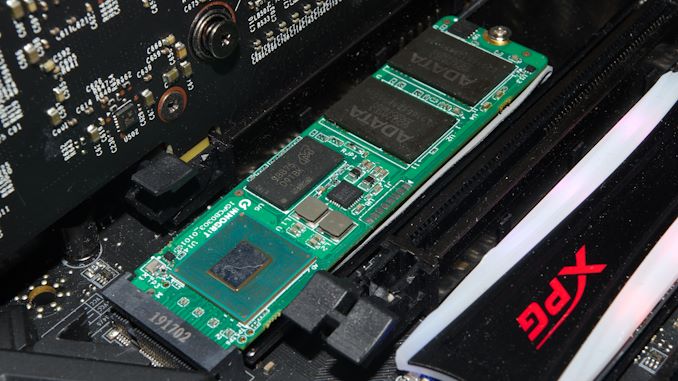
Among a mountain of new product announcements at CES, ADATA previewed three upcoming high-end consumer SSDs supporting PCIe 4.0. These will launch under their XPG gaming-oriented brand, and will serve to complement or replace the existing XPG Gammix S50, which ADATA's current PCIe 4.0 SSD based on the Phison E16 controller. The E16 launched last summer and is so far the only consumer PCIe 4.0 SSD controller shipping in retail SSDs. Phison's own E18 follow-up controller is expected to arrive around Q3, but before then we'll see other competitors start to deliver their own PCIe 4.0 SSD controllers.
ADATA tries out SSD controllers from almost everyone in the market, but their most popular SSDs in recent years rely on Silicon Motion controllers. The SM2262 and SM2262EN controllers are used in ADATA's best-performing PCIe 3.0 SSDs. For PCIe 4.0, Silicon Motion will replace those with the high-end SM2264 8-channel controller and the more mainstream SM2267 4-channel controller. Thanks to supporting much faster NAND interface speeds, the SM2267 should be able to offer performance comparable to current-generation 8-channel controllers, which means most of the extra bandwidth provided by the upgrade to PCIe 4.0 will go unused by the SM2267. Still, at 4GB/s for sequential reads, 3GB/s for sequential writes, and 400k IOPS for random IO, this is not by any measure a low-end solution. ADATA will be using the SM2267 in the XPG Pearl.
ADATA's drive using the Silicon Motion SM2264 will be the XPG Indigo. This should hit 7GB/s for sequential reads, more or less saturating the PCIe 4.0 x4 interface. Sequential writes will be a bit slower at around 6GB/s, and random IO speeds will get up to 700k IOPS.
Lastly and perhaps most interesting is the XPG Sage, one of a handful of upcoming products using the Rainier controller from newcomer Innogrit. This is currently promising the highest performance: 7GB/s reads, 6.1GB/s writes, and 1M IOPS for random IO. Those minor increases in top-line performance numbers relative to the XPG Indigo won't matter to real-world consumer usage, and whether the Sage or Indigo is the better overall performer may come down to which controller architecture offers better performance at low queue depths.
The release dates for ADATA's upcoming PCIe 4.0 SSDs have not been set, and it's not yet clear whether the Innogrit or Silicon Motion solutions will be ready to ship first. Of the three new drives, only the Innogrit-based Sage was featured in live demos at ADATA's CES 2020 exhibit. It appears unlikely that any of them will ship until around Computex (June) at the earliest. All three drives are currently planned to be offered in capacities up to 4TB using 96L TLC NAND—but for at least the Sage, ADATA hasn't decided whether to use Toshiba or Micron TLC.



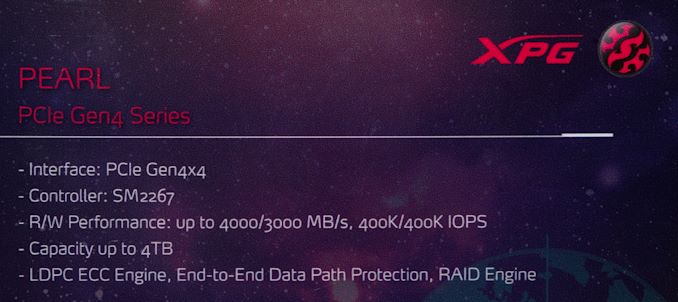
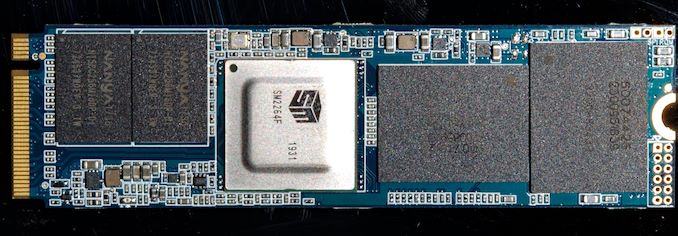
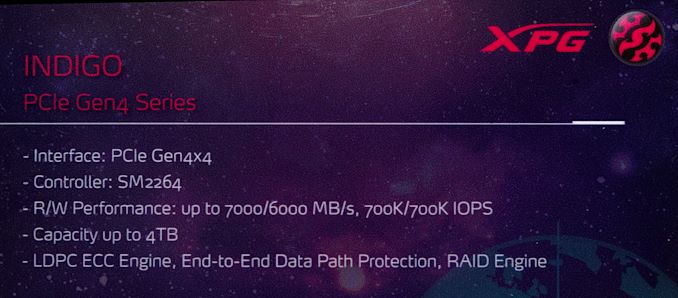

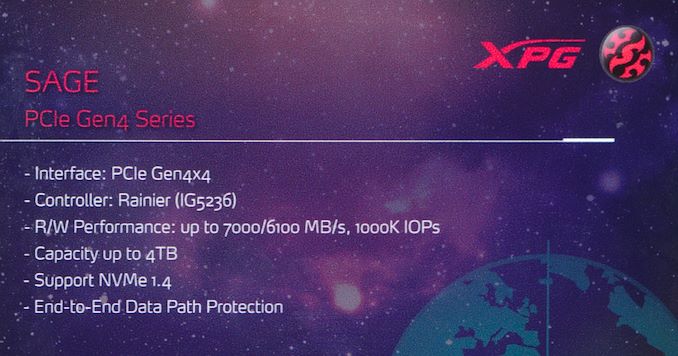








29 Comments
View All Comments
fred666 - Friday, January 17, 2020 - link
I would prefer a PCIe 3.0 drive that can actually max the PCIe x4 link in every situation (including non-sequential access) rather than a PCIe 4.0 drive which is only going to improve peak read/write speed.The NAND chips still seem to be the most limiting factor here, not the PCIe link.
Heck, even maxing SATA3 speed (600 MB/s) would be great. Even the high end SSDs aren't there yet and seem to crawl arround 100 MB/s in sustained random 4 KiB read (https://www.anandtech.com/show/13761/the-samsung-9...
teamet - Friday, January 17, 2020 - link
Riiight said fredextide - Friday, January 17, 2020 - link
There is always Optanesaratoga4 - Friday, January 17, 2020 - link
That isn't going to happen over NVMe, or realistically, almost any block-based storage protocol. If you want random access that fast, you need random access memory.Kjella - Friday, January 17, 2020 - link
Well 4K is extremely small these days, in the same article you can see them doing 128 kB reads at QD=1 and it scores 1700MB/s so over 50% of the IOPS even though each transfer is 32x as big. The only thing I can think of requiring that many small 4K reads would be a database but any table you're trashing like that should be in memory instead.ZachPA - Sunday, January 19, 2020 - link
Take a look at the 5- or 6-figures of entries in your SRUM and then tell me that 4k is such a small write these days.Flunk - Saturday, January 18, 2020 - link
This technology is available in the enterprise market. If you want to 100x as much for a drive I suggest you look there.PixyMisa - Saturday, January 18, 2020 - link
That's not going to happen with flash. It would require a random read access time of around 1 microsecond, and even the fastest NVMe drives are around 50 microseconds.If you want to pay for DRAM-based storage, that exists.
ksec - Saturday, January 18, 2020 - link
Any specific reason / workload you want that? It is not that Sustained Random 4K is the current bottleneck in most consumer application.fred666 - Monday, January 20, 2020 - link
It was just an example, there are still many cases were performance is under 600 MB/s, even more so with cheaper drives.